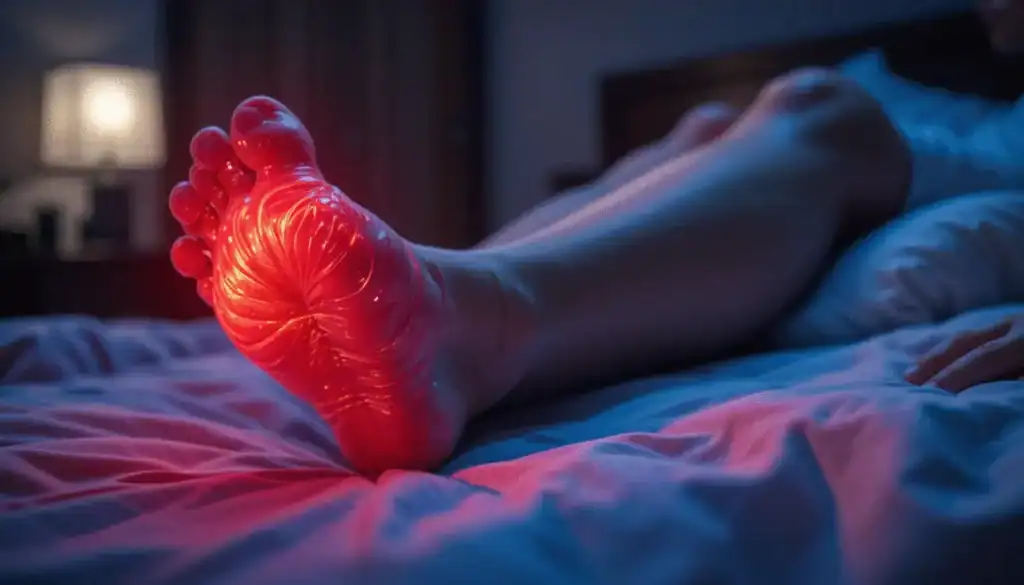A 32-year-old man visits your clinic and explains that he attended a barbecue party, consumed a lot of meat, and then suddenly woke up at 2 AM with severe, excruciating pain in his right big toe. He was completely fine before sleeping, and had never experienced such intense pain before. This is a classical presentation of gout.
📘 What is Gout?
Gout is an inflammatory crystal arthropathy caused by the deposition of monosodium urate crystals in joints due to elevated levels of uric acid in the blood. These crystals trigger intense inflammation, leading to acute joint pain, redness, swelling, and limitation of movement. It is more common in males and has two peak age groups: 30–39 years and over 60 years.
⚠️ Causes and Risk Factors
Primary Hyperuricemia (Idiopathic)
- Genetic causes (unknown exact mechanisms)
- Aggravated by:
- High purine diets (red meat, seafood)
- Alcohol
- Obesity
Secondary Hyperuricemia
Caused by either:
- Increased uric acid production due to:
- Tumor lysis syndrome
- Hemolytic anemias
- Lesch-Nyhan syndrome
- Excess purine intake
- Decreased uric acid excretion due to:
- Drugs: Thiazide diuretics, loop diuretics, aspirin, pyrazinamide
- Chronic kidney disease (CKD)
- Ketoacidosis
- Postmenopausal estrogen deficiency
Combined Cause (Increased production + Decreased excretion)
- Alcohol – the most important combined cause:
- Increases purine breakdown → uric acid
- Decreases renal uric acid excretion
🩺 Clinical Presentation
Acute Gouty Arthritis
- Sudden, severe pain (typically at night)
- Affects single joint, most often the first metatarsophalangeal joint (MTP), also called Podagra
- Redness, swelling, warmth, and restricted movement
- Peak pain in 12–24 hours, resolution in days to weeks
Triggers include:
- Alcohol
- Red meat, seafood
- Dehydration
- Trauma, surgery
- New medications (e.g., diuretics)
Chronic Gout
- Occurs after years of untreated hyperuricemia
- Formation of tophi (chalky uric acid nodules in joints or soft tissue)
- Joint deformity, chronic pain
- Renal involvement: kidney stones, uric acid nephropathy
🧪 Diagnosis
Gold Standard: Synovial Fluid Analysis
- Needle-shaped monosodium urate crystals
- Negatively birefringent under polarized light (yellow when parallel)
Cell Count:
- WBC: >2,000 but <50,000/mm³
(If >50,000 → suspect septic arthritis)
Culture:
- Negative (to rule out infection)
Serum Uric Acid:
- NOT useful in acute attack (can be normal or low)
- Used only in chronic gout for monitoring
Imaging:
- Not helpful in early/first attack
- In chronic cases: “rat-bite erosions” seen on X-ray
💊 Management
General Measures
- Avoid alcohol, purine-rich food, shellfish
- Increase water intake
- Weight loss if obese
- Review medications (e.g., stop thiazide diuretics)
🔥 Acute Gout Treatment
First-Line Options:
- NSAIDs (e.g., naproxen)
- Systemic corticosteroids (e.g., prednisone)
- Colchicine (within 12 hours of onset)
Preferred first-line (per ACP):
→ Glucocorticoids (oral or intra-articular)
🚫 Never use aspirin for gout pain—it raises uric acid
🚫 Never start urate-lowering therapy during a flare
🧊 Chronic Gout Management
Urate-Lowering Therapy (ULT)
Used to prevent future flares and reduce uric acid level.
Start only after the flare has resolved.
First-line:
- Allopurinol (xanthine oxidase inhibitor)
Second-line:
- Probenecid (uricosuric agent)
Third-line:
- Pegloticase (recombinant uricase)
Target uric acid level: <6 mg/dL
Prophylaxis when starting ULT:
- Low-dose NSAIDs, colchicine, or steroids for 1–3 months to prevent flare from crystal mobilization
📋 Clinical Checklist for Acute Gout
| Step | Action |
|---|---|
| 1️⃣ | Rule out septic arthritis |
| 2️⃣ | Perform synovial fluid aspiration and crystal analysis |
| 3️⃣ | Prescribe anti-inflammatory therapy (NSAIDs, glucocorticoids, colchicine) |
| 4️⃣ | Educate on lifestyle modifications |
| 5️⃣ | Avoid initiating urate-lowering therapy during acute phase |
| 6️⃣ | Follow up to assess for long-term ULT need |
✅ Summary
- Gout is caused by uric acid crystal deposition in joints.
- Presents acutely with severe monoarticular pain, most commonly in the big toe (podagra).
- Diagnosis confirmed by synovial fluid analysis.
- Acute management includes NSAIDs, steroids, or colchicine.
- Chronic management involves allopurinol, probenecid, or pegloticase.
- ULT should never be started during a flare.
- Lifestyle changes and prophylaxis are crucial for long-term control.


